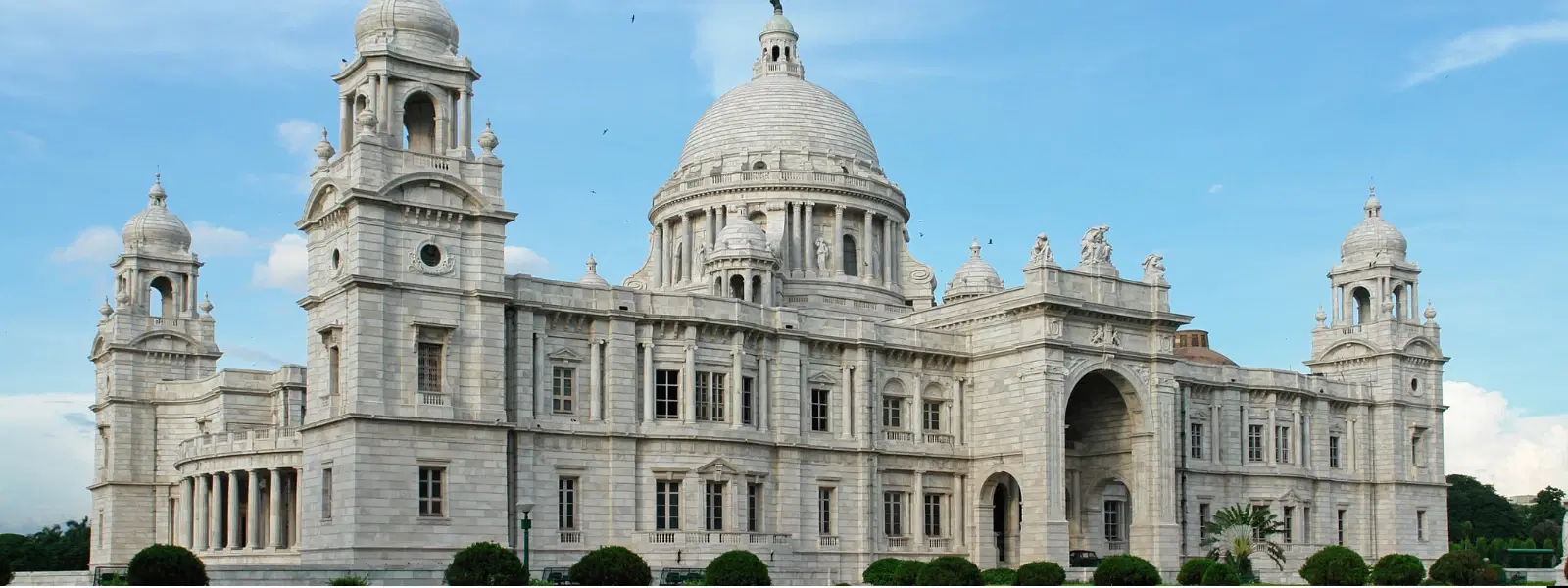
Flights
•04 min read

Agartala's Ujjayanta Palace in Tripura is not just a historical monument – it is a vibrant storyteller of royal legacies, cultural milestones, and architectural splendor. This blog aims to answer frequently asked questions about this magnificent palace, offering insights into its rich history, design, and practical visiting details. Whether you're a wanderer seeking affordable adventure, a planner in need of a family-friendly itinerary, a busy professional, or a luxury seeker, you'll find everything you need to appreciate one of the most coveted Agartala sightseeing spots.
Ujjayanta Palace was established in the early 20th century, with its roots deeply embedded in the regal history of Tripura. Commissioned by royalty, the palace was originally designed as a grand residence for the ruling family, reflecting their power and artistic sensibilities. Maharaja Radha Kishore Manikya played a pivotal role in the palace's history, steering its construction and imbuing it with the opulence characteristic of a tripura royal palace. The blend of regal ambition with innovative architecture set the stage for what would later become one of the best historical places in Tripura.
Over the decades, Ujjayanta Palace has undergone a significant transformation. Initially built as a royal abode, the palace transitioned into a state assembly building, symbolizing its evolving role in regional governance. Today, it proudly stands as the Tripura Government Museum, preserving artifacts that narrate the story of Tripura's cultural heritage. Numerous historical events have unfolded within its walls, making the palace a silent witness to the passage of time and the evolution of a vibrant culture.
The architecture of Ujjayanta Palace is an exquisite mix of Indo-Saracenic style with prominent Mughal influences. Its design captivates visitors from the moment they arrive, with sprawling gardens, soothing fountains, and intricate carvings that exude artistic finesse. The palace stands as one of the most impressive examples of Ujjayanta Palace architecture, blending traditional craftsmanship with innovative planning, making it a must-visit tourist attraction not only for historians but also for those who appreciate fine art and design.
Step inside, and you will be greeted by grand halls adorned with ornate ceilings and lavish decorations that reflect the rich legacy of Tripura's royal heritage. The carefully planned layout of the palace, with each room narrating its own story, serves as a visual history lesson in art and architecture. The attention to detail in every carving and the subtle interplay of light and space create an ambiance that is both grand and intimate, making it a treasured gem among Agartala tourist attractions.

Did you know? Ujjayanta Palace was named by Rabindranath Tagore, one of India's greatest poets, during his visit to Tripura. The name 'Ujjayanta' translates to 'illuminated palace,' capturing its glowing legacy and cultural significance.
The palace's transformation into the Tripura Government Museum has added a new dimension to its appeal. Visitors can explore exhibits that display an impressive collection of artifacts, paintings, and sculptures, each piece carefully curated to showcase the region's rich cultural heritage. This museum acts as a bridge, connecting the past with the present, and serves as a fascinating educational tour for anyone eager to delve into Tripura cultural heritage.
In addition to its role as a museum, the palace frequently plays host to cultural events and festivals that keep the traditions of Tripura alive. These events range from local art exhibitions to music and dance festivals, each contributing to the palace's vibrant atmosphere. They provide visitors with a chance to experience local spirit and festivities, further solidifying Ujjayanta Palace as a central hub of cultural and social life in Agartala.
Ujjayanta Palace is accessible to visitors from 10:00 AM to 5:00 PM, although timings may vary during public holidays. Ticket prices are reasonably set and vary by category, with concessions available for students and senior citizens. Whether you’re planning a budget-friendly day out or a more detailed family itinerary, knowing the timings and tariffs will help in organizing a smooth visit.
The palace is conveniently located near the Agartala Railway Station, making it an easily accessible destination. Various transportation options, including buses, auto-rickshaws, and taxis, are available for a hassle-free travel experience. This accessibility makes Ujjayanta Palace an attractive option for both local visitors and tourists exploring places to visit in Agartala.

While visiting Ujjayanta Palace, consider exploring other nearby landmarks such as the Tripura Sundari Temple and Neermahal, which also offer compelling insights into the state's history and beauty. Together, these attractions form a rich tapestry of experiences that make Agartala a delightful destination for sightseeing and cultural enrichment.
Ujjayanta Palace was built in 1901 by Maharaja Radha Kishore Manikya and has evolved from a royal residence to a state assembly building and now a museum showcasing Tripura's cultural heritage.
The palace was originally owned by the royal family of Tripura but is now managed by the Tripura Government as a museum.
Tripura is home to several historical palaces, including Ujjayanta Palace, Neermahal, and Kunjaban Palace, each contributing uniquely to the state’s rich legacy.
The palace is generally open from 10:00 AM to 5:00 PM, with possible changes on public holidays. It is best to check before visiting.
Ticket prices vary by visitor category, with discounts for students and senior citizens, ensuring it remains accessible for all.
Ujjayanta Palace is a captivating journey through the annals of Tripura's history and the artistic achievements of a bygone era. Its transformation from a royal residence to a government museum encapsulates the dynamic evolution of the region’s cultural heritage. Without a doubt, the palace stands as a beacon for history enthusiasts, art lovers, and curious travelers alike. A visit here promises not just an insight into India’s royal past but also a chance to experience the living heritage that binds the community together.